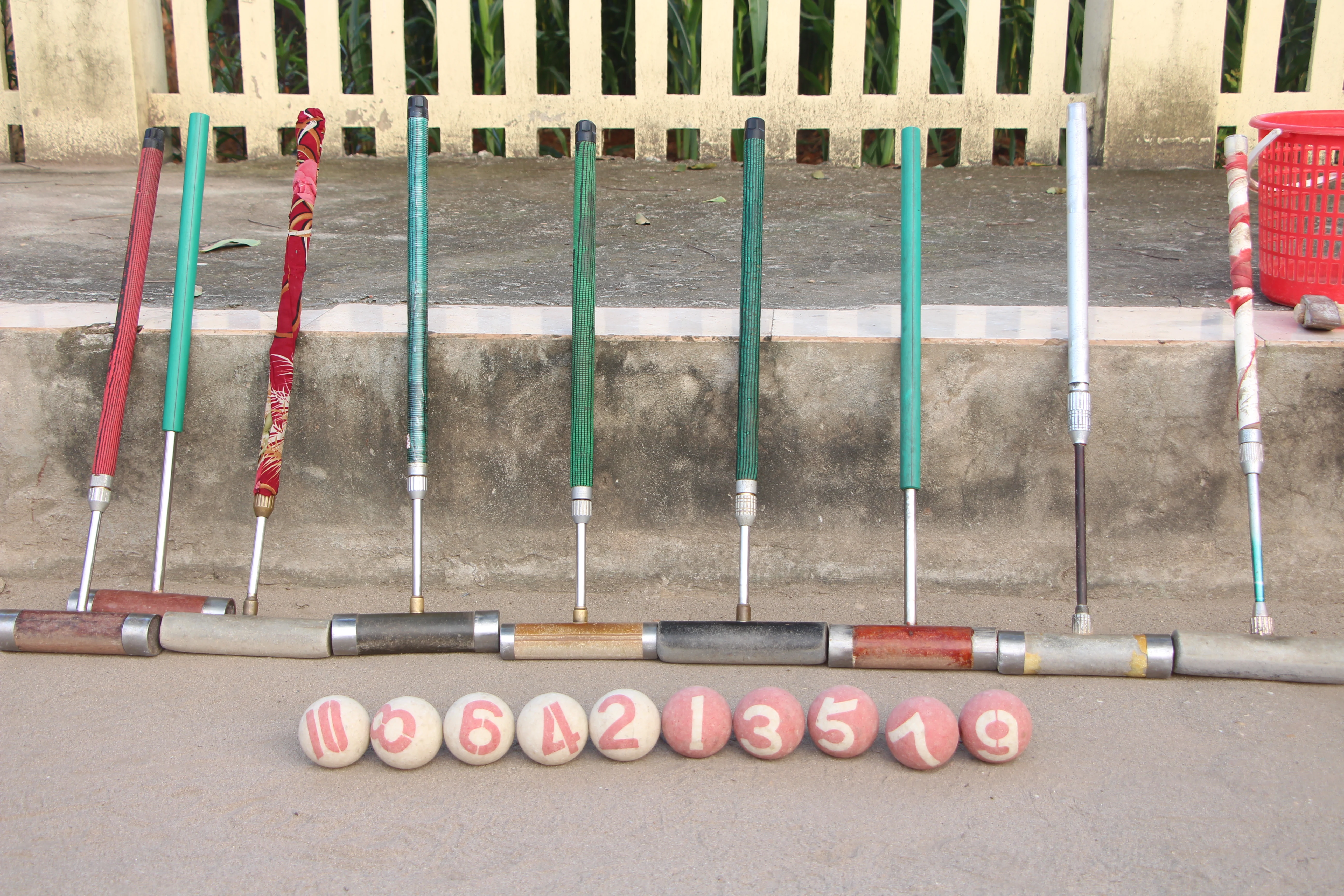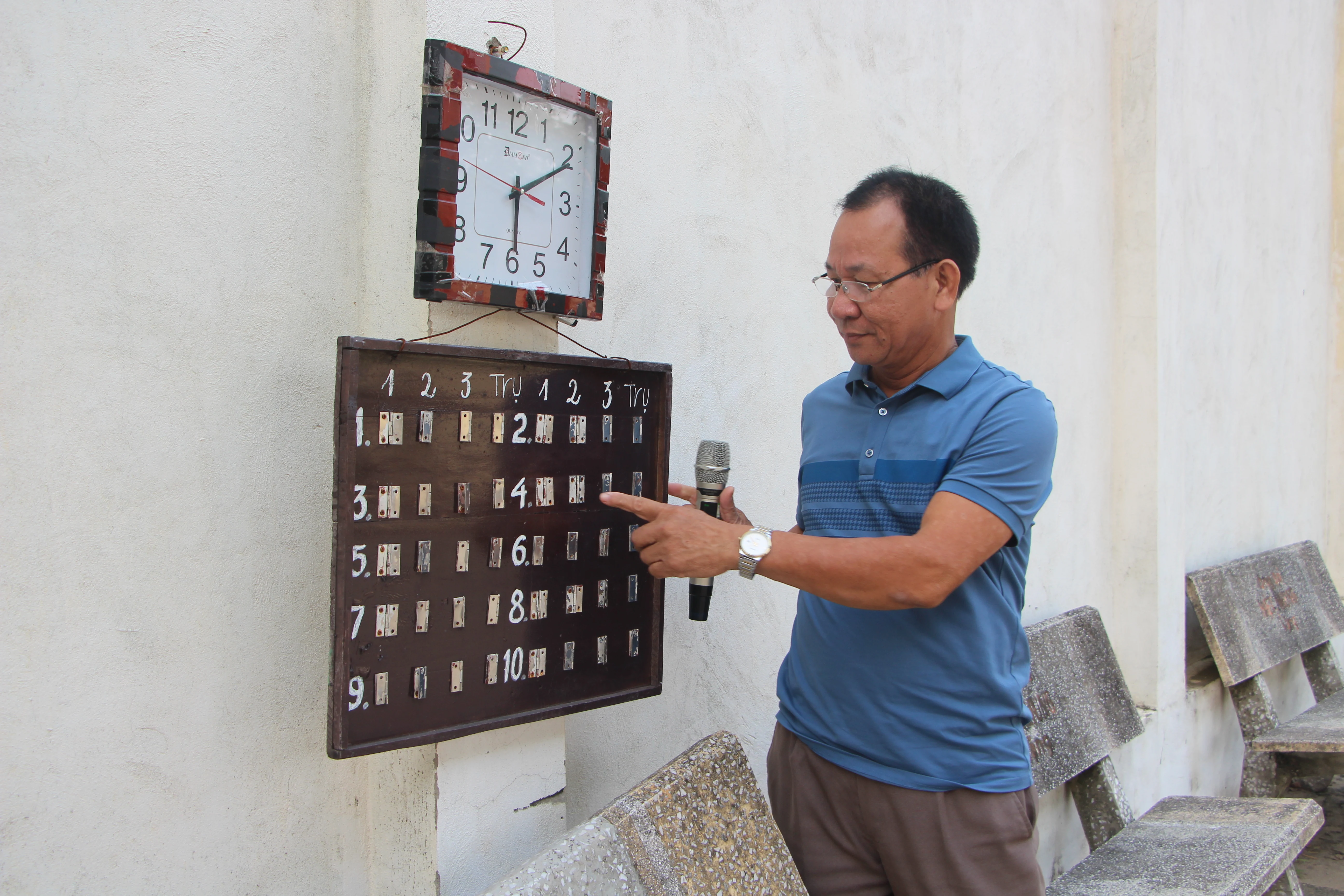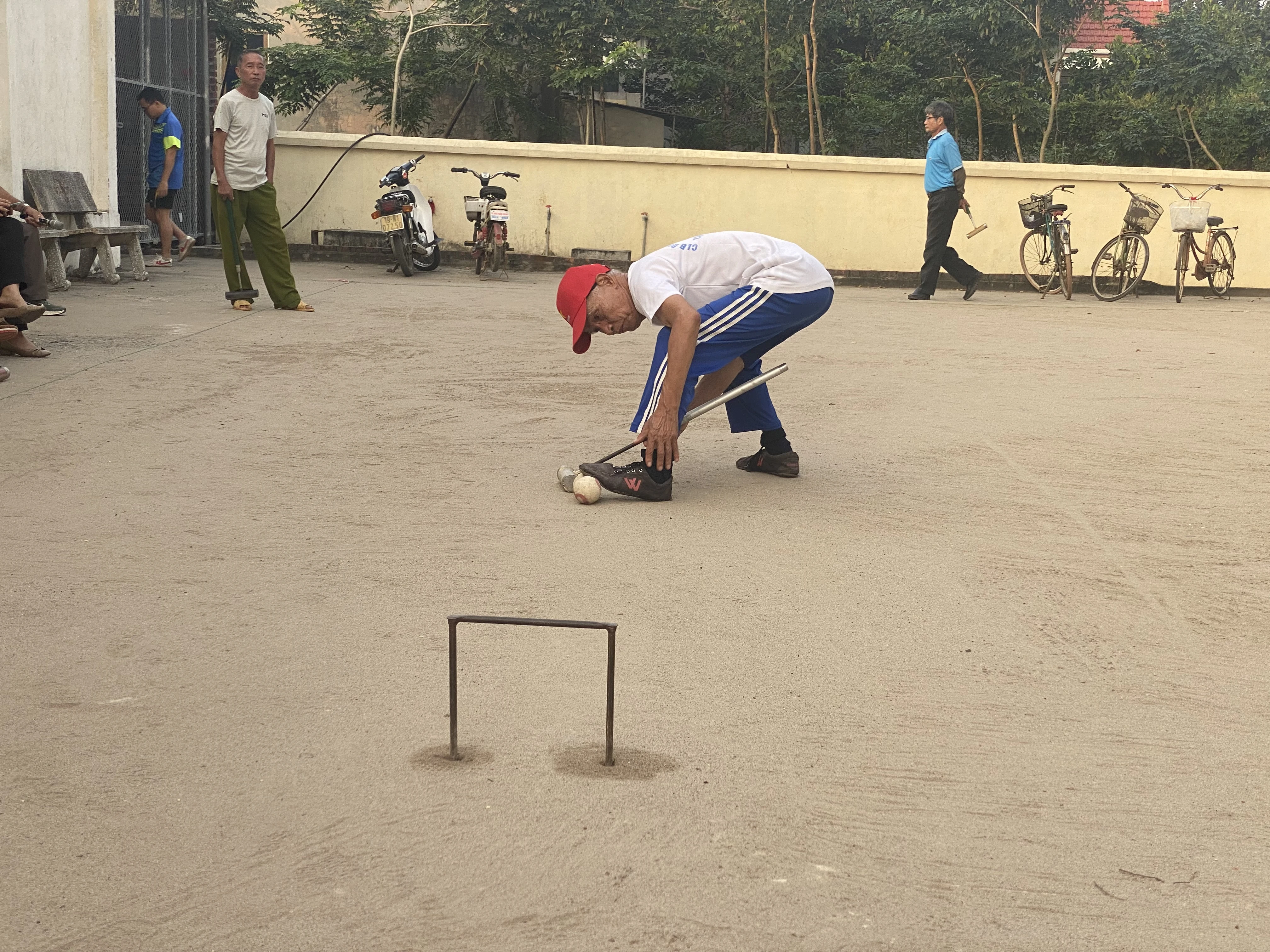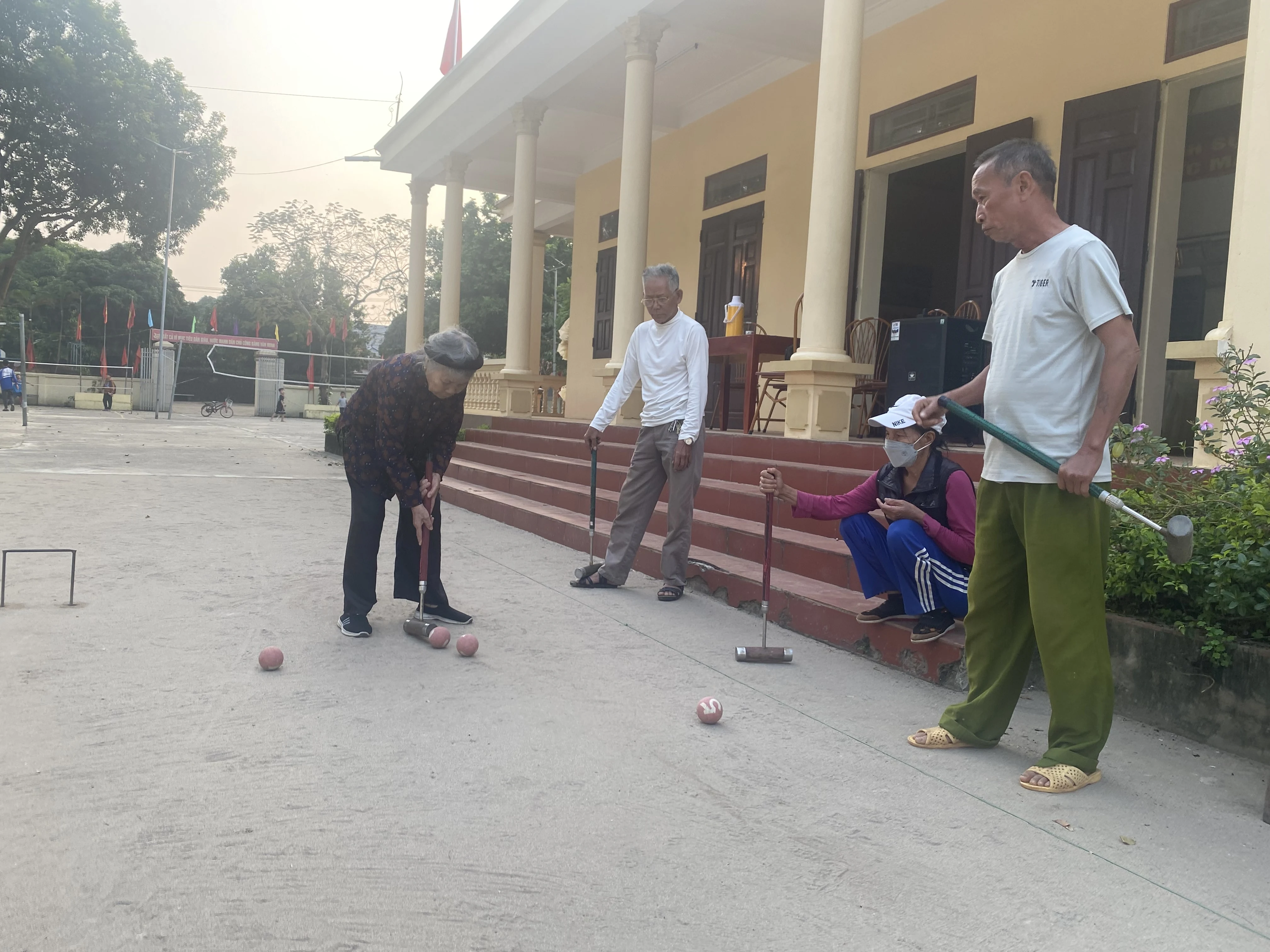{title}
{publish}
{head}
In the days leading up to Tet, amidst joy and excitement, every resident of Dan Quyen Commune, Tam Nong District, eagerly contributes to beautifying the village, welcoming the new year with joy, hope, and success. On every road and alley, the community, along with members of the women’s association, farmers, and the youth union, tends to the greenery, trims trees, arranges flower pots, and cleans up the surroundings.

Doorball attracts many elderly residents of Dan Quyen Commune, who actively play and practice the sport every day.
In the cultural houses of residential areas, amateur singers and actors enthusiastically rehearse performances to entertain the community in early spring. Seated around a tea table in the courtyard of the cultural house, elderly men and women eagerly discuss doorball strategies—a unique aspect of local life—as they prepare for friendly matches to celebrate the new spring.
Although not a traditional folk game, doorball has become an integral part of the cultural and spiritual life of Dan Quyen Commune. Every day, residents actively play and practice doorball at the cultural houses in their residential areas. During holidays, Tet, anniversaries, and traditional celebrations, doorball remains a highly anticipated event, drawing many participants and enthusiastic spectators. At the start of each new spring, the doorball competition is a key event in the series of activities celebrating the Party and welcoming the Lunar New Year in the commune.

The equipment used for playing and practicing doorball includes sticks, balls, and scoring gates.

Back in the 1990s, the people of Thuong Nong Commune (now part of Dan Quyen Commune) were introduced to this sport by a local army colonel who had learned to play while working away from home. After retiring, he sought support from the commune leaders to introduce the sport to the elderly, helping them improve their health, bring more joy to their later years, and contribute to the commune’s cultural and sports movement. Initially, elderly members from Branches 2 and 3 actively took part in doorball. Over time, doorball grew in popularity, spreading throughout the commune, particularly among the elderly and middle-aged. Its appeal lies in its unique and strategic gameplay, which requires teamwork, discussion, and tactical decision-making to outplay the opponents.
Players often refer to doorball as a “noble” sport with European origins. However, upon reaching Vietnam, it was adapted to better suit local customs and conditions.

To successfully hit the ball through the scoring gates, earn points, and secure victory, players must skillfully combine technique and strategy.
According to the elders, doorball is played on a large court featuring three small scoring gates (20 cm × 20 cm) and a flagpole positioned at the center. Players are divided into two opposing teams, each consisting of five members who are assigned either even or odd-numbered balls. Each team member is exclusively responsible for one ball. Each match lasts 30 minutes. Players aim to hit their balls through the three scoring gates and conclude by striking the flagpole at the center of the court.
During the game, if a player encounters an opponent’s ball, they have the right to strike it out of bounds, forcing the opponent to restart their turn. A ball that successfully passes through all three scoring gates and reaches the finish line earns five points. The team with the highest score at the end of the match wins. Successfully hitting the ball through the gates requires not only dexterity and flexibility but also strategic foresight. Players must carefully plan each shot, either setting up their next move or creating opportunities for teammates to disrupt the opponent’s progress, forcing them to restart. Thus, achieving success in doorball requires a balanced combination of technique, strategy, and a bit of luck.

While one member takes the shot, the entire team collaborates to strategize the next move.
The rules of doorball are relatively simple and require minimal physical exertion, making it ideal for the elderly. Regular practice helps improve the health of the elderly and boosts their morale and well-being. Each elderly person serves as a source of spiritual support, encouraging their children and grandchildren to work with enthusiasm, improve their family’s financial well-being, and contribute to the prosperity of their homeland.
Currently, Dan Quyen commune has established eight doorball clubs across residential areas. The Chairman of the Commune Fatherland Front Committee stated that the local government has provided opportunities for the elderly to engage in doorball by organizing competitions and exchange programs with other localities within and beyond the province. In particular, the local government and residential communities have designated land for sports facilities and actively mobilized residents to contribute to building safe and well-equipped playgrounds. In the near future, the locality will continue to promote and expand participation in doorball, encourage physical exercise to improve public health, enrich cultural life in residential areas, and further highlight the distinct cultural identity of Dan Quyen.
Le Oanh

baophutho.vn In Tu Vu Commune, where the Muong ethnic group predominates, gongs and drums are cultural symbols inseparable from the spiritual and material...

baophutho.vn In the era of integration and development, amidst the proliferation of modern industrial products, Phu Tho Province has managed to preserve...

baophutho.vn Phu Tho is a land rich in cultural and historical heritage, home to numerous artifacts, relics, and national treasures of exceptional value....

baophutho.vn On December 8, 2017, at its 12th session, the UNESCO Intergovernmental Committee for the Safeguarding of Intangible Cultural Heritage...

baophutho.vn Situated in the fertile land of Binh Nguyen (Vinh Phuc), the Huong Canh Communal House Complex — comprising Huong Canh, Ngoc Canh and Tien...

baophutho.vn For generations, whenever people mention Huong Canh Town (former Binh Xuyen District, Vinh Phuc Province), now Binh Nguyen Commune of Phu Tho...

baophutho.vn Kha Cuu Commune was formed by merging three former communes: Dong Cuu, Thuong Cuu, and Kha Cuu, with the Muong ethnic group accounting for over...

baophutho.vn Perched atop Tram Linh Hill, Quoc Te Temple in the former Di Nau Commune — now Tho Van Commune — has long been regarded as a solemn and...

baophutho.vn Located in Giap Lai Commune, this ancient communal house is revered by local residents as the “soul of the Muong village.” It is dedicated to...

baophutho.vn The Thai people are the largest indigenous ethnic group in Mai Chau District, now residing mainly in communes such as Mai Chau, Bao La, Mai Ha,...